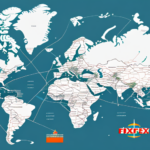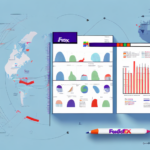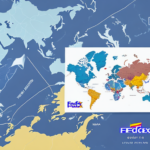How to Effectively Ship Ecommerce Products from India to the USA
Shipping ecommerce products from India to the USA can be a complex process involving the selection of suitable shipping partners, compliance with various customs regulations, and strategic planning to minimize costs and ensure timely delivery. This comprehensive guide provides an in-depth analysis of ecommerce shipping from India to the USA, covering essential aspects such as shipping fundamentals, selecting the right shipping partner, compliance and customs regulations, packaging and cost management, shipment tracking, handling returns and refunds, international shipping insurance, and building a sustainable supply chain. Whether you are a new ecommerce business seeking optimal shipping practices or an established retailer aiming to scale your operations, this guide offers valuable insights and actionable tips to help you successfully ship ecommerce products to the USA.
Understanding the Fundamentals of Ecommerce Shipping from India to the USA
Shipping ecommerce products internationally requires a thorough understanding of the shipping process, available transportation modes, and necessary documentation. Ecommerce businesses can ship products to the USA via air, sea, or land, each having its own advantages and considerations.
Modes of Transport
Choosing the appropriate mode of transport depends on factors such as product size, weight, destination, and delivery urgency. Air freight is preferred for its speed and efficiency, often used for high-value or time-sensitive items. According to Statista, air freight accounts for a significant portion of international ecommerce shipments from India to the USA.
Sea freight is more cost-effective for bulk or heavy items but involves longer transit times. Land transport is less common for shipping from India to the USA, typically used in scenarios where domestic logistics within a continent are involved.
Essential Documentation
Proper documentation is critical for seamless customs clearance and to avoid delays or penalties. Key documents include:
- Commercial Invoice: Details the transaction between the seller and buyer.
- Bill of Lading: Serves as a receipt for the goods shipped and a contract for transportation.
- Packing List: Specifies the contents, dimensions, and weight of each package.
Accurate and complete documentation ensures compliance with US Customs and Border Protection (CBP) regulations. For more details on required documentation, refer to the CBP's official guidelines.
Choosing the Right Shipping Partner for Your Ecommerce Business
Selecting a reliable shipping partner is pivotal to the success of your ecommerce operations. The right partner can provide efficient logistics solutions, reliable delivery times, and excellent customer service.
Key Factors to Consider
- Shipping Rates: Compare rates from multiple carriers to find cost-effective options.
- Shipping Times: Evaluate the speed of delivery offered by different shipping partners.
- International Experience: Choose partners with proven experience in international shipping, especially to the USA.
- Customer Service: Reliable customer support is essential for resolving shipping issues promptly.
- Tracking Capabilities: Real-time tracking helps in monitoring shipments and informing customers.
Services Offered
Consider the range of services a shipping partner provides, such as warehousing, inventory management, and returns handling. Partners like ShipScience offer comprehensive logistics solutions tailored for ecommerce businesses.
Handling Returns
Efficient return handling is crucial for maintaining customer satisfaction. Ensure your shipping partner offers streamlined return processes, including easy return labels and prompt refund handling.
Compliance and Customs Regulations
Adhering to US customs regulations is imperative to avoid delays, fines, or shipment rejections. Understanding these regulations helps ensure smooth import processes.
US Customs Regulations
The USA imposes specific tariffs and taxes on imported goods, which vary based on product categories. It's essential to classify your products correctly using the Harmonized Tariff Schedule (HTS) to determine applicable duties and taxes.
For detailed information, refer to the Harmonized Tariff Schedule provided by US Customs and Border Protection.
Proper Labeling and Packaging
Ensure all products are labeled accurately with the country of origin and any other required information. Packaging should be sturdy to withstand international transit and include necessary customs information.
Common Compliance Mistakes
- Incorrect Documentation: Incomplete or inaccurate documents can lead to shipment delays.
- Misclassification of Goods: Incorrect HTS codes can result in improper duty payments.
- Non-compliance with Labeling Standards: Failing to meet labeling requirements can cause regulatory issues.
Packaging and Cost Management
Effective packaging is vital to protect products during transit and to optimize shipping costs.
Packaging Tips for Safe Shipping
- Use Durable Materials: Invest in high-quality boxes and cushioning materials to prevent damage.
- Optimize Package Dimensions: Smaller and lighter packages generally cost less to ship.
- Label Clearly: Include clear shipping and handling labels to ensure proper handling.
Cost-saving Strategies
Managing shipping costs is essential for maintaining profit margins. Consider the following strategies:
- Accurate Weight and Dimension Measurements: Accurate package measurements prevent unexpected shipping costs.
- Flat-rate Shipping Options: Utilize flat-rate boxes offered by carriers to simplify cost calculations.
- Partner with Multiple Carriers: Leverage competitive rates by working with several shipping providers.
- Volume Discounts: Negotiate discounts based on shipping volume with preferred carriers.
Many shipping companies provide online shipping calculators, like those offered by FedEx and UPS, to help estimate and compare shipping costs.
Tracking and Customer Service
Ensuring timely delivery and maintaining transparency with customers are crucial for ecommerce success.
Shipment Tracking
Real-time tracking allows both businesses and customers to monitor the progress of shipments. Most carriers offer tracking services that provide updates at various stages of the delivery process. This transparency helps in managing customer expectations and addressing any delays proactively.
Effective Communication with Customers
Keep customers informed about their order status through automated notifications and updates. Clear communication reduces the likelihood of customer dissatisfaction due to unexpected delays or issues.
Managing Returns, Refunds, and Insurance
A robust returns and refunds policy, coupled with appropriate insurance, safeguards your business and ensures customer satisfaction.
Handling Returns and Refunds
- Clear Return Policies: Establish transparent policies outlining return conditions, timelines, and procedures.
- Efficient Return Processes: Simplify the return process with easy-to-use return labels and streamlined handling.
- Refund Timelines: Ensure timely processing of refunds to maintain customer trust.
International Shipping Insurance
Shipping insurance protects against financial losses due to damaged or lost shipments. Evaluate different insurance options based on coverage limits and costs. Providers like InsureMyShipment offer tailored insurance solutions for international ecommerce shipping.
Building a Sustainable and Scalable Supply Chain
Integrating sustainability into your supply chain not only reduces environmental impact but can also enhance your brand reputation.
Sustainability Practices
- Eco-friendly Packaging: Use recyclable or biodegradable materials to minimize waste.
- Carbon-neutral Shipping: Partner with carriers that offer carbon offset options.
- Optimized Routing: Efficient routing reduces fuel consumption and emissions.
Scaling Your Ecommerce Shipping Operations
As your business grows, scaling your shipping operations is essential to meet increased demand. Strategies include:
- Outsourcing to Third-party Logistics (3PL): Leveraging 3PL services can provide scalability and expertise.
- Automation: Implement automated systems for order processing and shipping management to increase efficiency.
- Negotiating Volume Discounts: Secure better rates by negotiating based on shipping volumes.
Case Studies: Success Stories of Indian Ecommerce Businesses
Several Indian ecommerce businesses have achieved global success by implementing effective shipping strategies. Flipkart, one of India's largest ecommerce platforms, partners with third-party logistics companies to enhance shipping efficiency and ensure timely deliveries. Myntra, a leading fashion ecommerce site, optimizes its supply chain to reduce shipping times and improve customer satisfaction. These case studies highlight the importance of strategic shipping partnerships and supply chain optimization in achieving international success.
Conclusion
Successfully shipping ecommerce products from India to the USA requires meticulous planning, adherence to regulations, and strategic partnerships. By understanding the fundamentals of ecommerce shipping, selecting the right shipping partners, ensuring compliance with customs regulations, optimizing packaging and costs, maintaining robust shipment tracking, managing returns and insurance, and building a sustainable supply chain, ecommerce businesses can effectively navigate the complexities of international shipping. Implementing these strategies not only minimizes shipping costs and transit times but also enhances customer satisfaction, propelling your business towards global success.






















